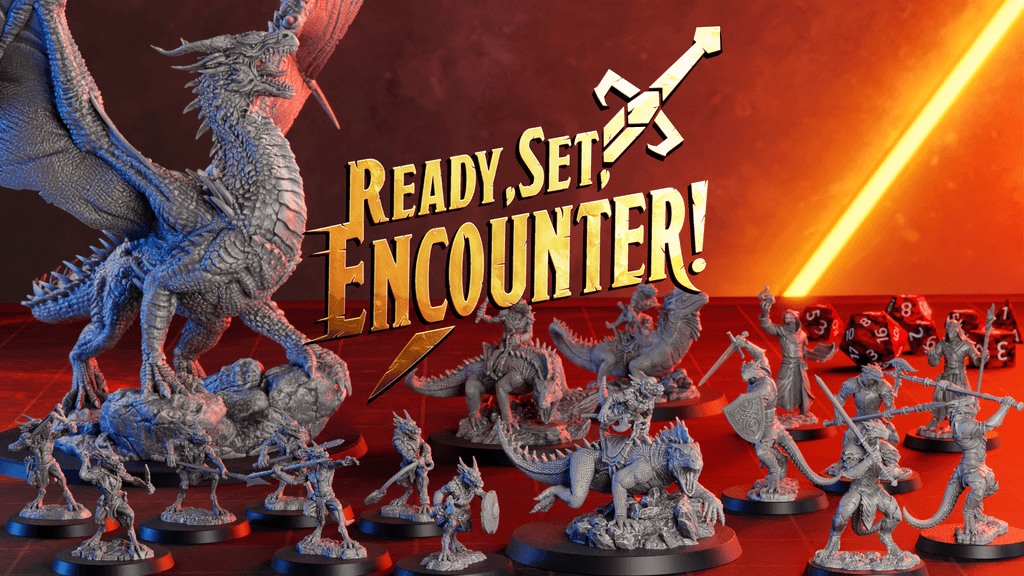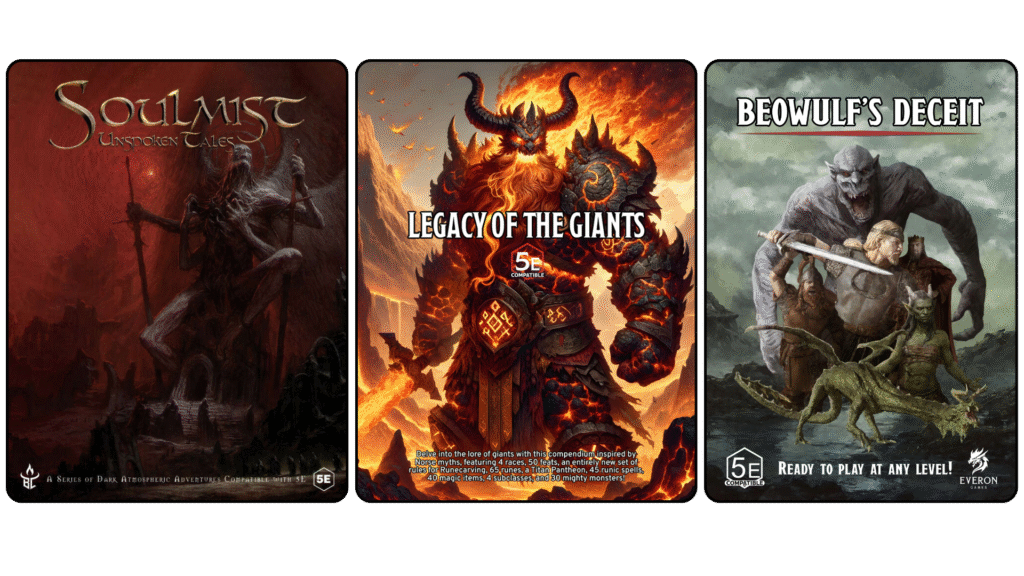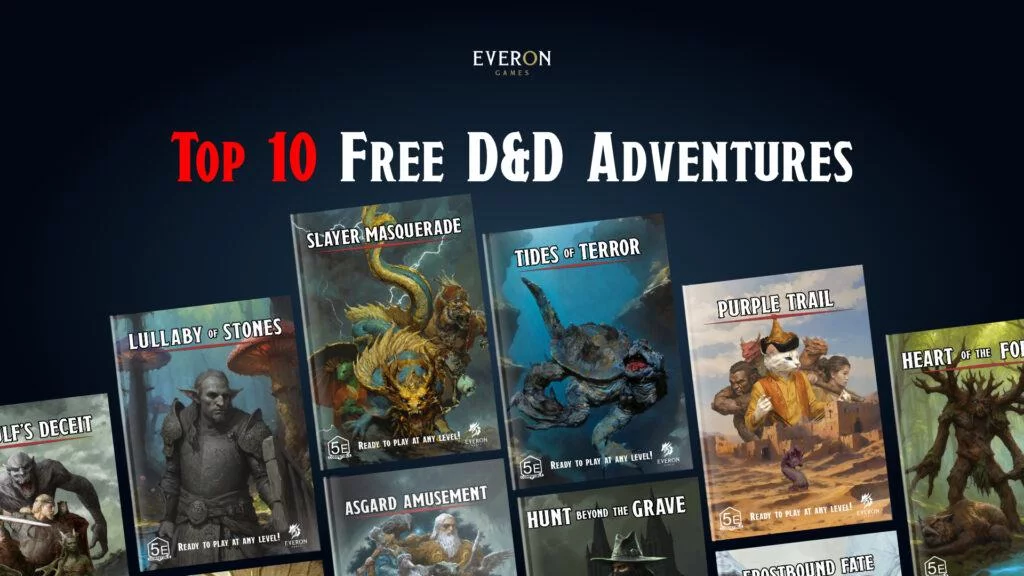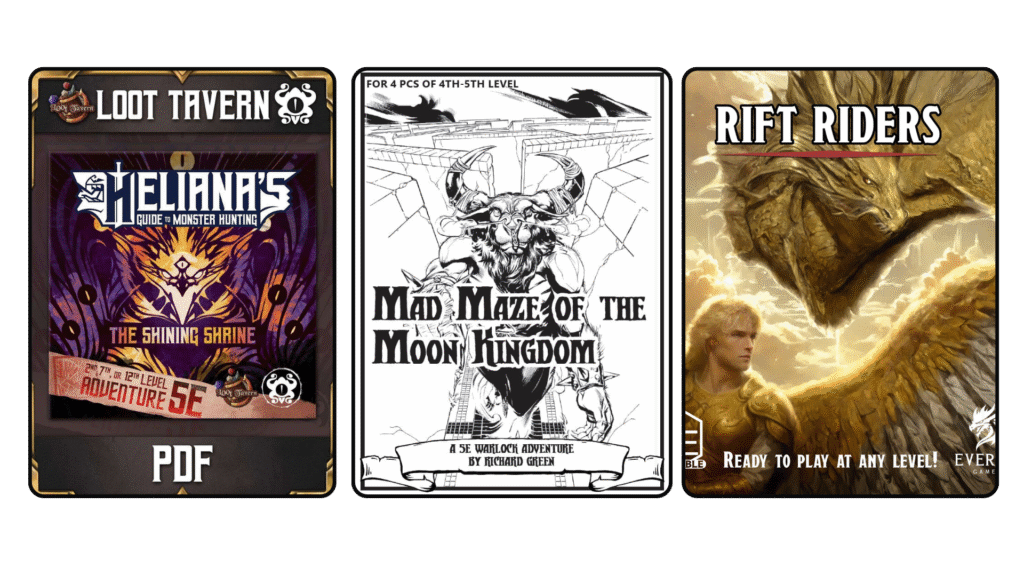How to Create Balanced DnD Encounters: A Guide for Dungeon Masters
Introduction
In Dungeons & Dragons, the encounter is where the table comes alive. A party of adventurers enters a goblin‑infested cave. Dice rattle; spells fly. In that moment a Dungeon Master stitches rules and story into a challenge that feels dangerous yet fair. With the recent renaissance of tabletop gaming, more people than ever are looking for help with this craft. Wizards of the Coast reported a 300 % rise in sales of introductory box sets and a 65 % growth in European sales by 2019. Female players now make up about 39 % of the community, and Gen Z represents 40 %. In 2020, revenue jumped 35 % compared with 2019, while virtual play increased 86 % thanks to digital platforms. To mark D&D’s 50th anniversary, Wizards released revised core books and a 3D virtual tabletop. The CEO of Hasbro later confirmed that digital revenue from D&D Beyond accounts for more than half of the brand’s earnings.
Those figures tell a simple story: DnD is mainstream, digital and diverse. New Dungeon Masters need guidance on building balanced encounters that satisfy a curious audience. This article shows how to plan, scale and enrich your encounters. We’ll begin with why balance matters, then cover design basics, tools, an example, improvisation, inspiration for 2025 and how to keep players engaged after the session.
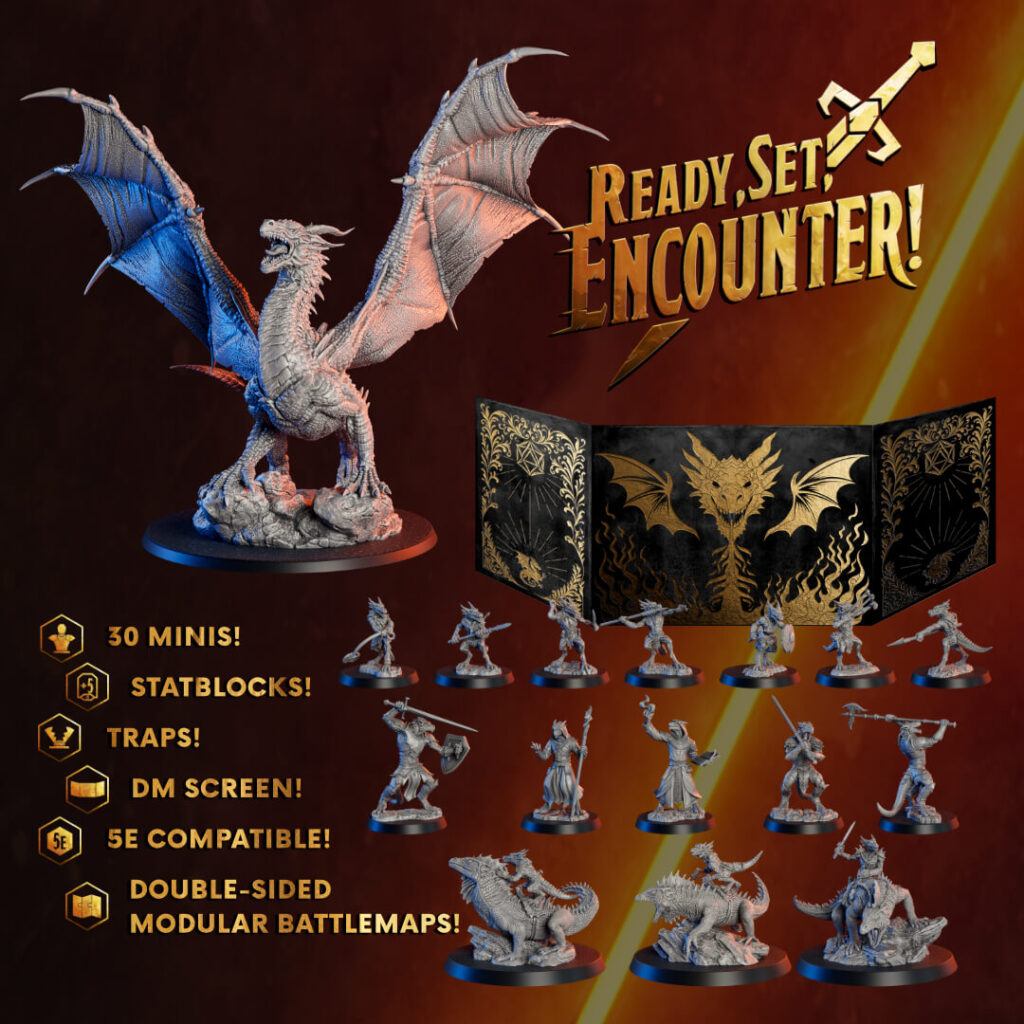
1. Why Balanced DnD Encounters Matter
When players sit down to slay a dragon, they expect a contest—not a rout. Balance doesn’t mean making every fight equal; it means that the challenge matches the party’s abilities and the narrative stakes. Unbalanced encounters can derail sessions, frustrate players or trivialize climactic moments.
1.1 Keeping Sessions Exciting
Your group likely consists of fighters, rogues, wizards and clerics. They all want a chance to shine. A balanced encounter ensures everyone contributes. If the wizard can drop a single fireball and wipe the field, the rogue and fighter feel irrelevant. Conversely, if enemies are too tough, the cleric may burn through healing spells early. Balanced DnD encounters keep the pacing tight and the spotlight moving.
1.2 Consequences of Poor Balance
Unbalanced encounters can erode trust between DM and players. Overly lethal battles lead to resentment or character death that feels unfair. Encounters that are too easy can make level‑ups feel hollow. Players tune out if they sense there is no danger. The DM’s goal is to challenge without crushing; to reward clever tactics without punishing creativity. By paying attention to challenge rating, action economy and party resources, you avoid common pitfalls.
1.3 Popularity and Expectations
The surge in DnD’s popularity means players come with expectations shaped by streams and podcasts. Shows like Critical Role showcase balanced, story‑driven encounters. With 86 % more people playing online, public visibility has grown. New players expect encounters that feel cinematic yet fair. Meeting those expectations builds trust and word of mouth, which is vital for DMs running campaigns for friends or hosting at game stores.
2. DnD Encounter Design Basics
The foundation of any balanced DnD encounter lies in understanding the mechanics: CR, XP budgets, terrain and objectives. While many DMs rely on intuition, a structured approach helps ensure that challenge matches party capability.
2.1 Defining an Encounter
An encounter is any scene where the party’s actions matter under pressure. It can be combat, social interaction or a puzzle, but this article focuses on combat because it has clear metrics. A combat encounter contains three elements: opponents, environment and objectives. Opponents provide threat; the environment shapes tactics; objectives give players a reason to fight beyond simple survival.
2.2 Challenge Rating and XP Budgets
DnD uses Challenge Rating (CR) to estimate how dangerous a monster is. A CR 1 creature is a fair fight for four 1st‑level characters. But CR alone doesn’t account for action economy. Five goblins (CR ¼) can overwhelm a lone fighter because they take multiple turns. Wizards of the Coast publishes experience budgets to help DMs. For instance, a party of four 5th‑level characters has a daily XP threshold of around 1,100 each. The DMG’s guidelines show how to combine monsters and multiply XP for numbers and difficulty. A good rule of thumb: keep the encounter budget at medium difficulty for most fights and sprinkle in one hard encounter per session.
2.3 Choosing Environment and Objectives
Terrain plays a huge role in balancing encounters. An open field favors ranged attackers; a narrow corridor neutralizes large creatures. Add verticality with balconies or pits. Weather and light conditions can matter too. Objectives also influence difficulty. Rescue missions, timed escapes or protecting an NPC can divert resources and increase tension. When designing, ask: Why are the adventurers fighting? What happens if they fail? A clear objective makes the encounter memorable.
3. Tools and Resources for Planning
No DM has to design in a vacuum. The boom in digital play means there are many tools for building balanced DnD encounters. Using them not only speeds up preparation but also helps with SEO when readers look up DnD encounter builder or random encounters.
3.1 Online Encounter Builders
The DnD Beyond Encounter Builder is the flagship tool. It uses official monster data and CR calculators, letting you adjust party level, number of players and desired difficulty. Because digital revenue now accounts for over half of D&D’s earnings, Wizards invests heavily in these tools. Other options include Kobold Fight Club, which allows custom monster filters and homebrew entries, and Fight Club 5e for mobile. Many of these generators present XP budgets, action economy warnings and suggestions for terrain.
3.2 Random Encounter Tables and Modules
Sometimes you need inspiration on the fly. Random encounter tables in books like Xanathar’s Guide to Everything or online websites offer lists based on terrain and level. They can spark creative scenarios: maybe the party meets a band of rival adventurers or stumbles onto a hidden shrine. Pre‑written modules such as Lost Mine of Phandelver or Curse of Strahd demonstrate balanced design. Analyzing published adventures teaches pacing, foreshadowing and scaling.
3.3 One DnD and the 3D Virtual Tabletop
Wizards’ One DnD revision modernizes the system. It promises backwards‑compatible rulebooks, a simplified character builder and a 3D virtual tabletop. The VTT features digital miniatures and dynamic lighting. It can automate CR calculations and environment effects, making it easier to manage balanced encounters. Because these tools are new, DMs who learn them early can deliver fresh experiences and capture SEO traffic from players searching for One DnD virtual tabletop or 3D encounter builder.
4. Practical Example: Building a Level‑5 Encounter
Theory only goes so far. Let’s build a sample encounter for a party of four 5th‑level characters using the principles above. This section shows how to pick monsters, design terrain and weave narrative.
4.1 Party Composition and Goals
Imagine your party consists of a paladin, a ranger, a bard and a wizard. They’re investigating a cursed mine to retrieve a legendary gemstone before a rival cult. The adventurers want to navigate the mine, avoid hazards and confront guardians. The paladin is the frontline, the ranger provides ranged support, the bard offers utility and healing, and the wizard delivers area damage.
4.2 Selecting Monsters and Difficulty
Based on the DMG, a party of four 5th‑level characters has a medium encounter XP budget around 4,500. You decide to throw them against three Wight Knights (CR 3 each) and six Skeletons (CR ¼ each). Each wight is worth 700 XP (2,100 total); skeletons add 150 XP for 900. Multiplying for 9 monsters yields a total of about 9,000 XP, a hard challenge. To adjust, you lower the skeleton count to four (600 XP), bringing the total to around 7,800 XP. The fight is still challenging but won’t TPK the party if they use terrain and tactics.
4.3 Managing Terrain and Story
The mine features two levels. On the lower level, a narrow bridge crosses a chasm with toxic gas below. The skeleton archers fire from ledges. The wights guard the gemstone on a dais. The objective is to steal the gem while avoiding being pushed off the bridge or poisoned. Narrative seeds: the cult is performing a ritual that will awaken the undead; failure means unleashing a horde. The party must decide whether to rush the dais or disable the ritual first. This gives players meaningful choices and uses the environment to heighten tension.
5. Adapting Encounters: Flexibility and Improvisation
No plan survives contact with players. They’ll split the party, charm enemies or turn the fight into a negotiation. A good DM balances preparation with improvisation. The next three topics show how to adjust on the fly while keeping encounters balanced.
5.1 Adjusting on the Fly
Use hidden hit points and reserve monsters. If the battle is too easy, bring in reinforcements from another room. If it’s too hard, have a monster flee or reduce its hit points. You can also adjust tactics: perhaps the enemies target the party’s well‑armored paladin rather than the squishy wizard. Tools like the DnD Beyond Encounter Builder allow you to track HP and conditions, making it easier to tweak numbers without players noticing.
5.2 Environment and Hazards
Adding hazards can spice up a fight without changing CR. Think about collapsing ceilings, lava fissures or magical traps. These hazards force players to reposition and use their abilities creatively. They also allow DMs to lower the number of monsters because the environment adds danger. A few examples: swinging ropes over a pit, pillars that emit lightning or arcane runes that trigger random effects. Describe them in vivid DnD language – crumbling stone, acrid smoke – to engage the senses.
5.3 Responding to Player Ingenuity
Players will often circumvent your plans. They may polymorph into a bird, teleport or recruit NPCs to fight for them. Embrace their creativity. Instead of punishing out‑of‑the‑box thinking, reward it with clever consequences. If they negotiate with the cult leader, perhaps the cult demands a future favor or provides partial information. If they circumvent hazards, maybe they still trigger an alarm. Flexibility ensures the encounter remains balanced while preserving agency.
6. Noteworthy DnD Encounter Ideas for 2025
To keep your campaigns fresh, draw inspiration from upcoming trends. Several campaigns highlighted by fans and blogs for 2025 involve time travel, celestial wars, eco‑themes and sky pirates. Integrate these ideas into your encounters to excite players and capture search interest for DnD campaigns 2025.
6.1 Time Travel and Multiverse
Adventures involving time loops and alternate realities are on the rise. Create encounters where players leap between timelines to stop an event. For example, the party fights a future version of a villain in a ruined city and must travel back to prevent that future. Each timeline can alter terrain, monsters and objectives. This ties into the time‑traveling heroes campaign idea. Use caution to avoid paradoxes that derail your story.
6.2 Celestial and Infernal Wars
The War of the Celestial Factions and Rise of the Infernal Empire campaign hooks provide rich material. Pit angels against demons and drop your party in the middle. Imagine an encounter atop a floating citadel where the adventurers must choose sides. They might ally with the archon of law to repel an infernal general or broker a truce between rival angelic houses. High stakes and moral dilemmas keep players engaged.
6.3 Eco‑Campaigns and Sky Pirates
In the Last Stand of the Druid Circle, the party defends ancient forests from corrupt industrialists. Encounters here involve sentient trees, elementals and environmental hazards like toxic runoff. Airship adventures from Pirates of the Lost Sky encourage vertical combat, boarding actions and aerial beasts. Both themes resonate with players who want fresh settings beyond traditional dungeons.
7. Keeping Players Engaged After the Session
A balanced encounter is just the start. Keeping players excited between games builds loyalty and ensures they return. Marketing research shows that retaining existing customers is cheaper than acquiring new ones. The same principle applies to DnD campaigns: rewarding your players for continued engagement strengthens the group.
7.1 Recurring Sessions and Community Events
Consistency matters. Schedule regular sessions, send reminders and provide recaps. Host community events like one‑shot nights, painting workshops or campaign retrospectives. Encourage players to share character art and session notes. This fosters a sense of belonging. According to marketing insights, brands increase loyalty by nurturing connections after purchase. DMs can mimic this by staying engaged off table.
7.2 Using Digital Tools and 3D Tables
Encourage players to explore digital platforms like D&D Beyond. The site lets them manage characters, share notes and access rulebooks. With the upcoming 3D VTT, you’ll be able to host dynamic online sessions with animated maps. Consider running side quests between main sessions using digital boards or voice chat to keep the world alive.
7.3 Loyalty Programs and Homebrew Content
You can borrow ideas from loyalty marketing to keep players invested. Offer XP bonuses or in‑game rewards for attendance, creative role‑play or helping to recap sessions. Encourage players to contribute by designing NPCs, drawing maps or writing journals. This co‑creation fosters buy‑in and helps you generate content. Share your homebrew monsters or encounters online to attract new players searching for homebrew DnD encounters or balanced DnD designs.
8. Summary
Balanced DnD encounters are at the heart of memorable DnD sessions. By understanding challenge ratings, XP budgets, terrain and objectives, you can tailor each encounter to your party’s strengths and weaknesses. Use tools like DnD Beyond and Kobold Fight Club to plan battles quickly, and keep an eye on One DnD’s evolving ecosystem. Draw inspiration from time travel, celestial wars and eco‑themed campaigns to keep your games fresh. Above all, stay flexible and listen to your players: adjust encounters on the fly, embrace creative solutions and build loyalty by engaging between sessions.
If you’re ready to design your next balanced encounter, start by listing your party’s strengths and choose a monster roster that tests them without overwhelming. Explore the encounter builders mentioned above and share your creations on forums or social media. Your players will appreciate the effort, and fellow DMs searching for balanced DnD encounters will find your work. Roll initiative and let the adventure begin!
